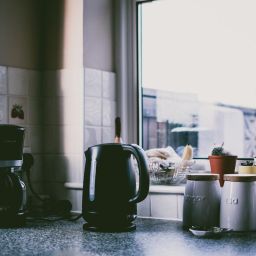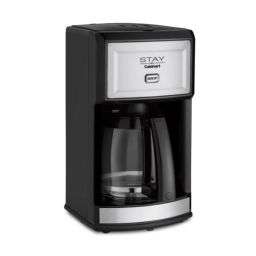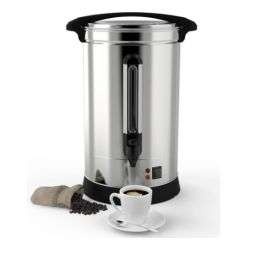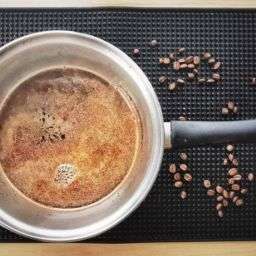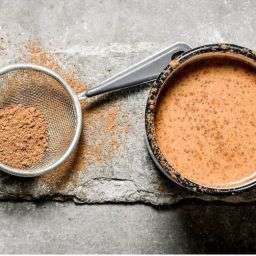
Vietnamese coffee, with its unique charm and robust flavor, has captivated coffee aficionados around the globe. At the heart of this distinctive beverage lies the Vietnamese coffee filter, also known as a “phin,” a simple yet ingenious device that brews coffee in a way no other method can replicate.
The phin is more than just a brewing tool; it embodies the rich coffee culture of Vietnam, marrying simplicity with tradition to produce a cup of coffee that’s deeply flavorful and aromatic. Embracing the phin means stepping into a world where each cup is a reflection of patience and craftsmanship, offering a taste of Vietnam’s coffee legacy in every sip.
How To Use Vietnamese Coffee Filter
Using a Vietnamese coffee filter is straightforward and rewarding, allowing anyone to brew a perfect cup of coffee with ease:
- Prepare Your Equipment: Start by gathering your Vietnamese coffee filter (phin), a cup, and your favorite coffee grounds. Ensure everything is clean and ready to go.
- Add Coffee: Place the filter over your cup and add about 2 tablespoons of coarsely ground coffee into the filter chamber.
- Initial Pour: Boil water to between 195-205°F. Add just enough water to cover the coffee grounds, let it bloom for 30 seconds. This step releases the coffee’s oils and aroma.
- The Brew: After the bloom, fill the chamber with hot water. Place the lid on and let the magic happen. The water should drip through in about 4-5 minutes, extracting the rich flavors of the coffee.
- Enjoy: Once the dripping stops, remove the filter, and your Vietnamese coffee is ready to enjoy. For an authentic touch, add sweetened condensed milk to taste.
Key Takeaways
Mastering the use of a Vietnamese coffee filter requires attention to detail and an appreciation for the craft of coffee brewing. Here are some crucial tips to ensure your cup is as authentic and delicious as possible:
- Grind Size Matters: Use a coarse grind to prevent grounds from slipping through the filter and to ensure optimal extraction.
- Water Temperature Is Key: Aim for hot water between 195-205°F. Too hot, and you risk burning the coffee; too cool, and you won’t extract enough flavor.
- Brewing Time: Patience is vital. A proper brew should take about 4-5 minutes. If it’s too fast, your coffee will be weak; too slow, and it might be over-extracted.
- Adjust to Taste: Experiment with the amount of coffee and water ratio to find your perfect balance. More coffee for a stronger brew, less for something milder.
- Clean Your Phin: Keep your phin clean to maintain the quality of your coffee. Rinse with hot water after each use.
The Parts of a Vietnamese Coffee Filter
Diving into the anatomy of a Vietnamese coffee filter, also known as a “phin,” reveals a beautifully simple yet effective design. Each part plays a crucial role in the brewing process, ensuring every cup of coffee is as delightful as the last.
- Lid: The lid keeps the heat in and ensures a steady brewing temperature, crucial for extracting the coffee’s full flavor.
- Filter Chamber: This is where the magic happens. You add your coffee grounds here, and it’s designed to hold them in place while water passes through slowly, extracting the coffee’s rich flavors and aromas.
- Press Filter: This little piece sits atop the coffee grounds, gently pressing them down. Its job is to ensure the water flows evenly through the grounds, avoiding any rushing that could lead to under-extraction.
- Perforated Plate: The base of the operation, literally. It supports the filter chamber and ensures the dripping coffee lands right in your cup, not all over the table.
Choosing the Right Coffee and Filter
When it comes to brewing Vietnamese coffee, the choice of coffee beans and the material of the coffee filter can make all the difference.
Robusta vs. Arabica: Vietnamese coffee traditionally uses Robusta beans, known for their strong, bold flavor and higher caffeine content. Arabica beans, on the other hand, tend to be smoother and more aromatic. Your choice depends on your taste preference; robust for a traditional, stronger cup, or Arabica for a milder experience.
Material of the Filter: Vietnamese coffee filters come in various materials, including aluminum, stainless steel, and even ceramic or glass. Stainless steel filters are durable and easy to clean, making them a popular choice. Aluminum filters are lightweight and heat up quickly, affecting the brewing temperature slightly. Ceramic and glass options, while less common, provide an inert brewing environment, potentially offering a purer taste.
The Art of Brewing: Detailed Steps and Techniques
Brewing Vietnamese coffee is an art form, where every detail matters, from the bloom to the last drip. Let’s dive into the intricacies:
- The Bloom Phase: Start by adding hot water just to cover the coffee grounds in the filter. This phase is critical as it allows the coffee to “bloom” — releasing gases and oils, which enhances the flavor. Wait about 30 seconds before proceeding to the next step.
- First Drip Importance: The timing of the first drip is crucial. It should occur around 2 minutes after you’ve started the brew. This slow start ensures that the water has enough time to interact with the coffee, extracting the full depth of flavor.
- Continuing the Brew: After the bloom, fill the filter with more hot water. The brewing process should take about 4-5 minutes in total. Adjust the press filter if you notice the water flowing too quickly or too slowly.
- The Last Drip: Pay attention to the last drip. It signals the end of extraction. Removing the filter too early or too late can affect the taste, making it either too weak or too bitter.
- Adjustments for Taste: Experiment with the amount of coffee, the grind size, and the brewing time to adjust the strength and flavor profile to your liking. More coffee and a finer grind will result in a stronger cup, while less coffee and a coarser grind offer a milder taste.
Customizing Your Vietnamese Coffee Experience
To tailor your Vietnamese coffee experience to your personal taste, consider the following adjustments:
Strength: Play with the coffee-to-water ratio. More coffee equals a stronger brew, and vice versa.
Sweetness: The iconic sweetened condensed milk is key. Start with a tablespoon and adjust according to your sweetness preference. For a vegan option, consider coconut milk or a plant-based condensed milk.
Additives: For a unique twist, add a pinch of salt to cut the bitterness, or a dash of cinnamon or cocoa for a flavored profile.
Cleaning and Maintaining Your Vietnamese Coffee Filter
Keeping your phin in top condition is essential for consistently great coffee. Here’s how:
After Each Use: Rinse the filter thoroughly with hot water to remove any residual coffee grounds and oils.
Occasional Deep Clean: Every few uses, soak the filter in a mixture of warm water and vinegar to dissolve any buildup. Rinse well afterward.
Dry Completely: Before storing, ensure the filter is completely dry to prevent rust or mold growth, especially if it’s made of metal.
FAQs
Can I use any coffee beans with the Vietnamese coffee filter? Absolutely! While traditional Vietnamese coffee is known for its strong Robusta beans, feel free to experiment with Arabica or blends for varying flavors and strengths. The choice of bean is all about personal preference.
Do I need to adjust the brewing process for different coffee grounds? Yes, brewing adjustments may be necessary. Finer grounds might require a slower pour to prevent overflow, while coarser grounds might need a bit more water. It’s all about finding the right balance for your taste.
Is it okay to use the Vietnamese coffee filter daily? Of course! The phin is designed for daily use. Just ensure you clean it properly after each brew to maintain its condition and your coffee’s quality.
Final Thoughts
Mastering the Vietnamese coffee filter, or phin, is more than just learning to brew coffee; it’s embracing a rich tradition that offers simplicity, cultural depth, and the joy of crafting your perfect cup. This unique brewing method not only highlights the robust flavors of Vietnamese coffee but also encourages experimentation and personalization in your coffee ritual.
Whether adjusting brew strengths, experimenting with different beans, or adding your favorite additives, the phin is your canvas for culinary creativity. So dive into the world of Vietnamese coffee, and let each cup be a reflection of your personal taste and the rich coffee culture of Vietnam.



